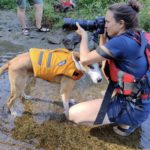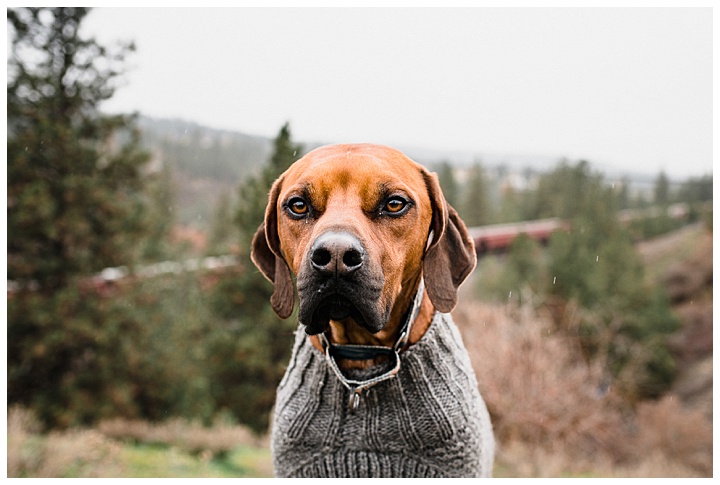Do you ever feel like the second you pull out a camera, your dog that was looking is now looking to the left, right, up, down, or smelling the ground? Perhaps your furry model is looking ANYWHERE but you at you? If the answer is yes, then this post is for you. I will break down getting a dog to look at your camera in a way that keeps the dog and photographer happy!
As a Spokane dog photographer, I use many of the ideas below whenever I meet a new wiggly, distracted, or perhaps shy dog on a photoshoot. Add this to your weekly time with your dog, and I’m confident you’ll see a change in the photos you take.
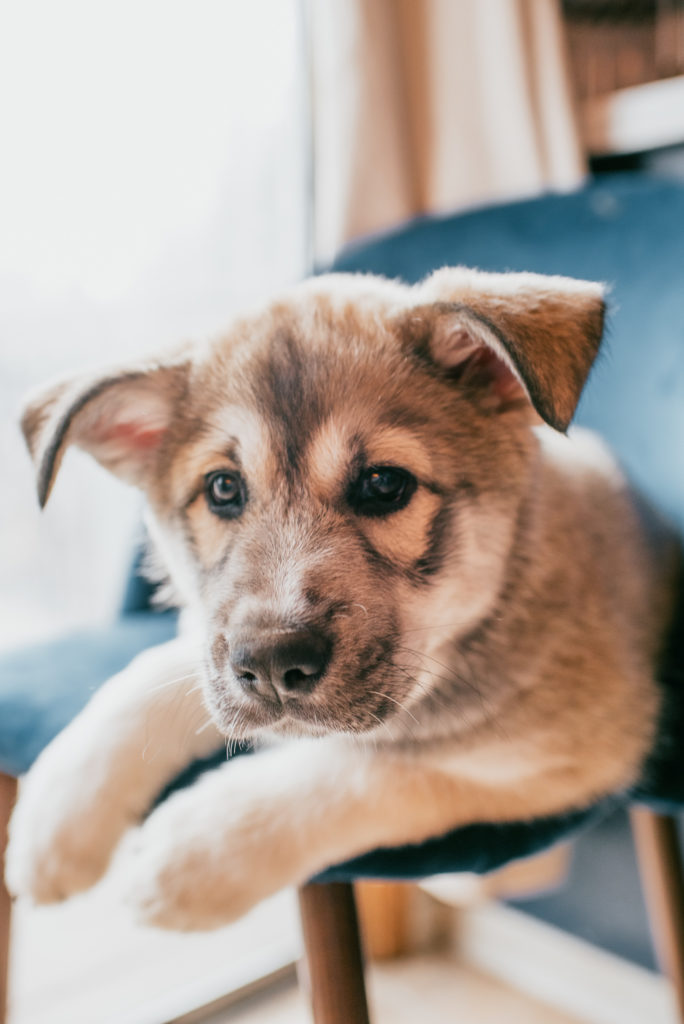
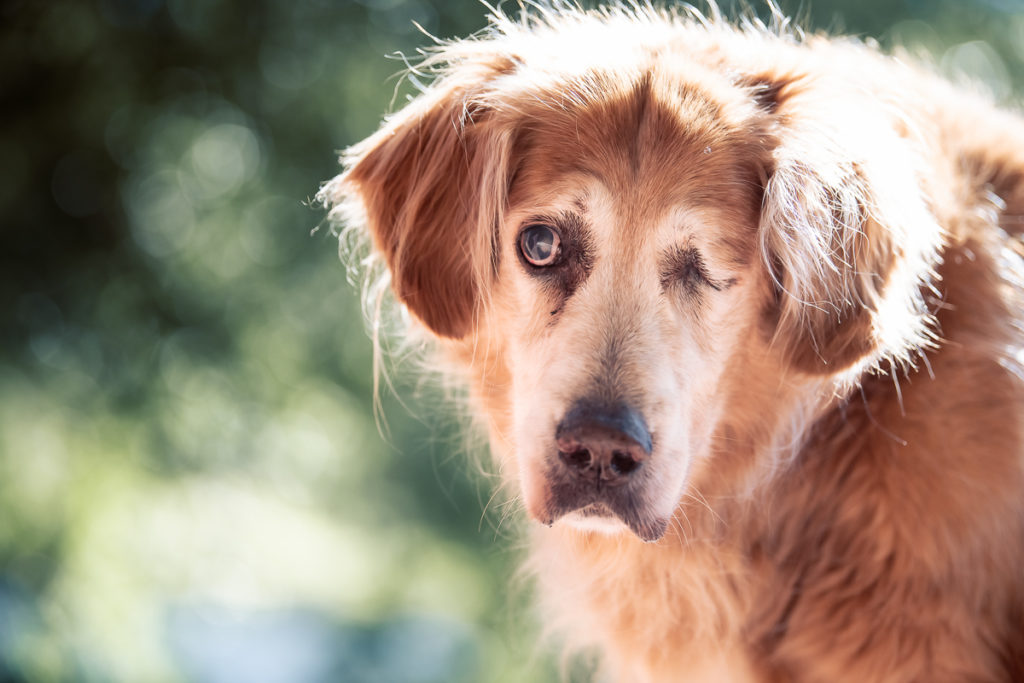
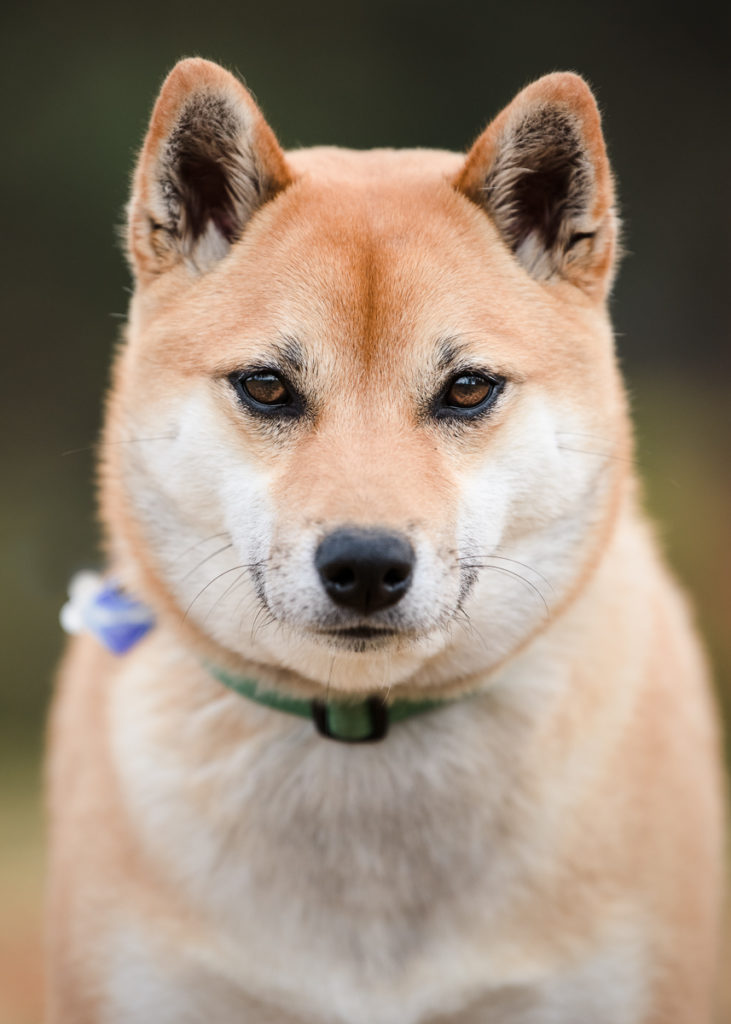
Figure Out What Motivates Your Dog
Treats, toys, or “puppy parties” – Figure out what high-value reward your dog responds to. Most of the time at a session, my pockets are packed with treats, but at home, Q loves nothing more than a bit of reassurance that he is the coolest dog on the block (I call that a puppy party). Come armed with your dog’s favorite reward, ready to go.
Getting a Dog to Look at a Camera through Repetitive, Positive Reinforcement
The goal we are working towards is this: when the camera comes up, there is a reward for paying attention. Here are a few tips as you work through this.
- Make sure to give a high-value treat ONLY when they stay in place. Ex. We take a photo, the dog runs up to us, and then we give a treat. In this scenario, you’ve given a reward for running to the camera, NOT paying attention to the camera. Give the treat fast enough to catch them right after the action you want. In the above scenario, that’s watching you.
- Start Small and Scale. If at any point your dog’s attention span seems too short or they are nervous, adjust and try a version that you know they can succeed at.
Associate the sound of the camera with a reward
I will often start by sitting beside a dog with my camera. I’ll click the camera and then reward. Dogs are sensitive, and that click can be enough to startle them. We want to associate the sound of the camera/shutter with a positive experience.
Tip – Make sure you’re beside your dog in a non-threatening way. If they want to bail after hearing the click, let them leave but give them a reward when they return.
Start taking “pretend” photos
This is the part most people skip. Your first photos should only be geared towards creating a good experience for the pup. Forget posing or even focusing.
- Start close by so you can reward quickly.
- Get your dog’s attention; for Q, I call his name or say “watch.”
- Click when they are looking.
- Immediately Reward.
Do this often and make it a game. Sit, click, and reward. Many times, I practice this with Q without the intention of taking a photo. The goal is simply to create a fun game to encourage a positive response to my camera. Even though he’s pretty good now, this game is still in rotation.

Increase distance and time
Once your dog has made a solid connection to the camera and a reward, you can start increasing your distance and time. Back up 5′ and repeat the process. Remember to walk up to your dog to give the reward instead of calling your pup towards you. This reinforces staying in one spot.
Something that really helps as you increase duration is a marker word. I’ve linked more about marker words here, but the general gist is that it’s a word you can use to mark the behavior you’re encouraging. It lets your dog know they got it right even when you’re further away. For Q, it’s “yes.” Immediately after I snap the photo, I mark “Yes” and walk up and treat.
Once you get some distance, you can gradually work into more “posed” shots because your dog is holding attention for a greater time.
Trouble Shooting Q and A
Q . What do you do if your dog starts looking away again when you start backing up?
A. This is your cue that you’ve exceeded their attention span. Reduce your distance or time until your pup stays engaged.
Q. My dog is just too distracted. Help!
A. Start the process in a safe space that they are very familiar with. This isn’t the time to take Fido to a new location. Try putting them on a couch with sides or a chair. Something that naturally contains the wiggles.
Q. What do you do when everything is falling apart, and nothing is working?
A. This still happens to us, too!
Always, always end on a good note. Sometimes this is hard because literally, nothing is going right. Go back to basics. Maybe you sit beside them, call their name, and when they look, quickly reward. The most important part is to find a way to end on a win for both dog and owner.
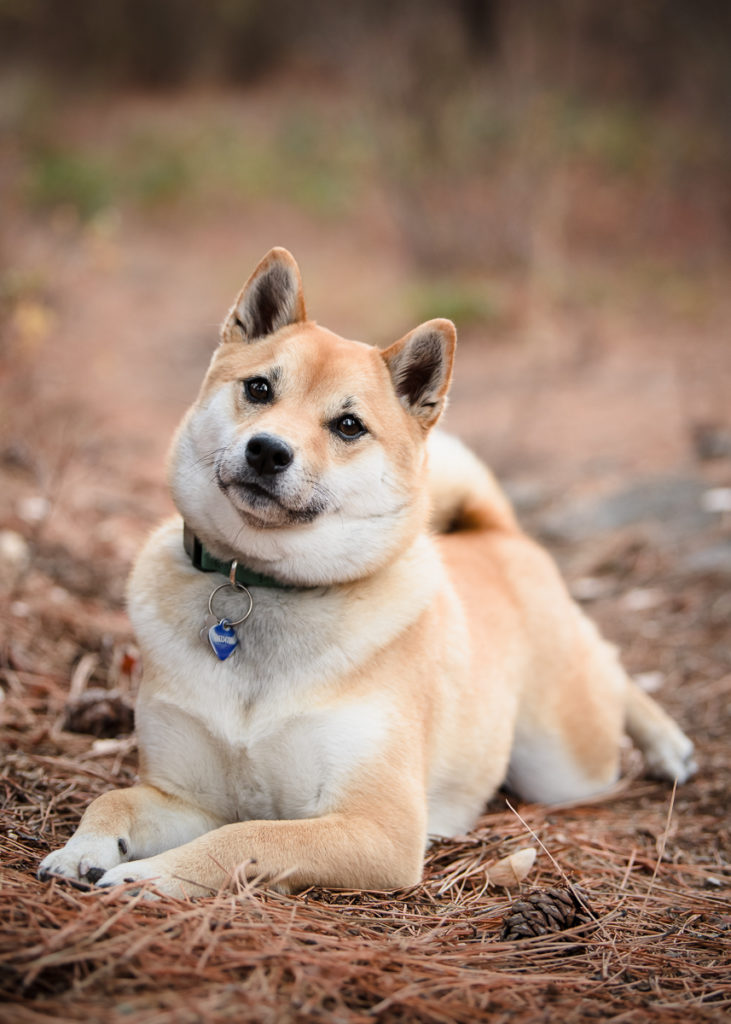
Wrapping it up
I hope you found this post helpful as you work on improving your dog photography skills. While this doesn’t work for every dog, I’ve found that some variation of this is beneficial with most dogs I encounter.
Stay patient and keep it positive!
Ready for more? Head here for more on my philosophy of photographing pets.
Cheers!
MB – A Spokane based dog photographer serving the Inland NW
